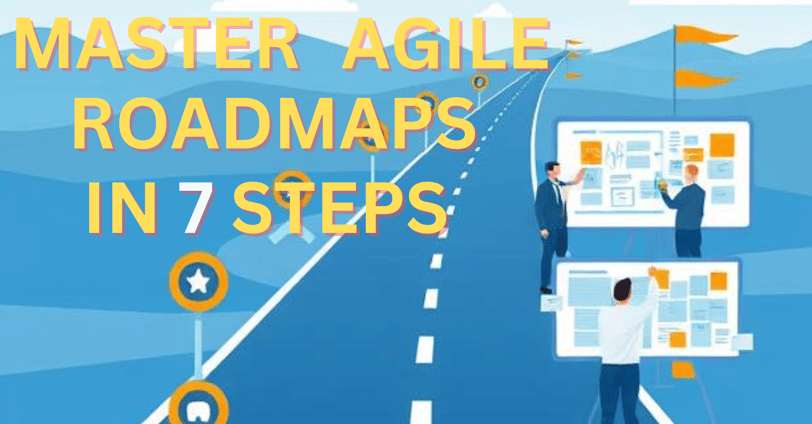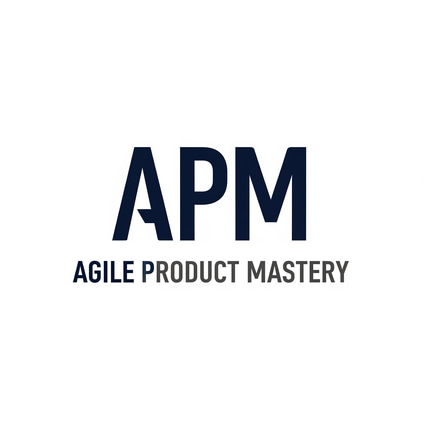How to Create Effective Agile Roadmaps (7 Tried-and-Tested Methods)
Struggling to create an Agile roadmap that balances vision with flexibility? Learn 7 proven strategies to build a high-impact, outcome-driven product roadmap.
Written by: Matt Gregory - Founder Agile Product Mastery
4/7/20253 min read


Struggling to build an Agile Roadmap that works? Here's how to fix it
Your product strategy's success or failure may hinge on your agile roadmap. Overly strict, and they get stale in a flash. Too general, and groups become disoriented.
So, how does one go about creating a strategic and flexible road map? One that brings everyone on the same page, keeps teams motivated, and provides tangible benefits to customers?
Discover seven tried-and-true methods for crafting an effective Agile roadmap—one that strikes a balance between clarity and adaptation, vision and flexibility.
1. Shift to Outcome Based Roadmaps
Traditional roadmaps focus on features or deadline whereas Agile roadmaps prioritize outcomes.
For example, instead of saying:
"We will release Feature X in Q3,"
Try "By Q3 we aim to boost user engagement by 20% using personalised recommendations."
Important Change: Stop focusing on features and start addressing issues that have an effect on the company. Advice from the pros: Prioritize results while maintaining flexibility by using the Now-Next-Later framework.
2. Align Roadmaps with Product and Business Objectives
A roadmap's purpose is to connect product strategy with its implementation. Think of the big picture: how will this road plan help us achieve our company's goals?
In particular, which KPIs do we hope to influence?
So how do we do this right?
- Establish high-level business goals, such as increasing revenue or retaining customers.
- Break these into product goals that can be measured, such as lowering churn by 10%.
- Map initiatives that contribute to these goals.
For example, if your goal is to increase customer retention, your roadmap might focus on features such as improved onboarding or reward programs.
3. Keep Your Roadmap Up-to-Date
Agile roadmaps are dynamic in nature, changing with the speed of the team, the market, and consumer input.
How to keep it up to date:
- Revisit and revise the road map on a sprint or quarterly basis.
- Use data insights to prioritization.
- Involve stakeholders early to ensure alignment
Example: Instead of a rigid 12 month roadmap, adjust quarterly basednon value
4. Use the right format for your Roadmap
Your choice of format affects buy in and clarity. Three successful templates for Agile roadmaps are as follows:
- The most flexible option is the now-next-later model. Spelling out what is in development now, what is prioritized for the next quarter and what are potential future releases
- For strategic focused roadmaps, use a theme-based roadmap. This organizes initiatives by key product themes (e.g., “User Growth,” “Operational Efficiency”). This keeps the team focused on the big picture rather than just the features.
- For measurable outcomes, use OKR-Drive Roadmaps, which link objectives to key results. This ensures every initiative is driven by business impact.
5. Prioritize ruthlessly - less is more
- Utilise frameworks such as MoSCoW, which stands for "Must-have, Should-have, Could-have, Won't-have".
- Prioritise efforts that have a high effect yet require little work.
- Instead of releasing ten little features, focus on releasing one big feature that has a significant effect, in line with consumer demands and commercial impact.
6. Make sure stakeholders understand the roadmap
If nobody can follow it, it won't matter how good the blueprint is.
Use the following guidelines for a compelling roadmap presentation:
- Use a visual tool such as Miro, or a product board to keep things visible.
- Make separate versions for various stakeholder groups (such as developers and executives).
- Use storytelling to illustrate the significance of each initiative.
A good tip is don’t worry about specific dates; concentrate on the overall direction rather than strict deadlines.
7. Balance long term vision with short term flexibility
Remember Agile doesn't mean not having a plan it means having flexibility to adapt.
Strike the right balance in your roadmap by:
- Create your north star vision
- Break into quarterly goals
- Iterate based on feedback
So what does this mean? Instead of committing to a 2-year feature roadmap, commit to quarterly outcome-based goals that adapt. Iterate depending on feedback and don't keep to a strict roadmap.
Roadmap Smarter, Not Harder
A high-impact roadmap is more than simply a list of features; it's a tool for strategy that helps bring together planning and implementation.
By shifting to outcome-driven planning, prioritizing effectively, keeping roadmaps adaptable, and communicating clearly, you’ll create a roadmap that drives real impact.
Ready to master your Product Owner journey?
Grab your copy of Agile Product Mastery: The Product Owner's Playbook to Strategy, Execution & Influence and take your skills to the next level.
© Agile Product Mastery — Build a career that scales. Not one that burns out.
Powered by Baltimore Advisory Pty Ltd — ABN 97 678 312 475 — All rights reserved
Follow us on LinkedIn
